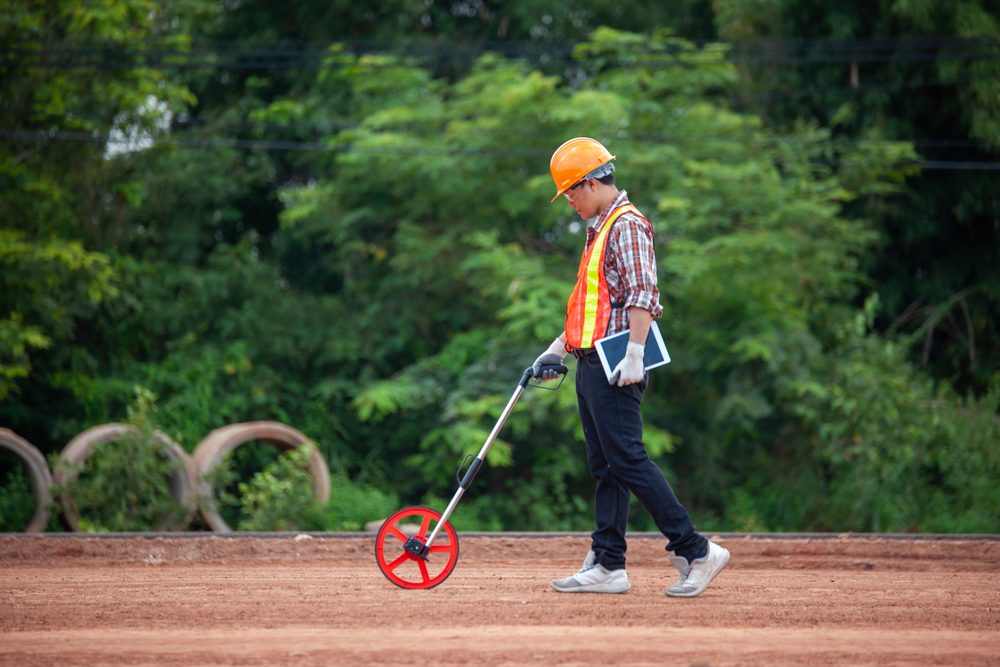Manual Construction Measuring Tools In A Digital Age

Whether you are building a skyscraper, road, pool, or even just mapping out a sidewalk, measuring devices play a key role in ensuring everything fits into place. Without an accurate understanding of the scope and size of a project, you might order too many or too few materials. Once the project has started, inaccurate measurements can lead to pieces not fitting properly, resulting in a range of problems from ugly-looking designs to unsafe construction.
In this modern digital age, it's easy to be blindsided by all the unique and flashy features of new tools and equipment. Sometimes having extremely precise laser levels that can accurately measure within 1/16 of an inch from across a jobsite is a huge benefit. Other times, it can be an unnecessary expense when the old-fashioned methods are still trusted around the globe. Simple measuring tools like tape measures, measuring wheels, and rulers are a staple of any workman’s kit.
Let's take a step back from the more sophisticated devices, and see how classic measuring tools are still a relevant and useful part of the modern world.
Measuring Tapes & Reels
A handheld tape measure is a useful and compact tool that can be found on just about any jobsite. At its simplest, a measuring tape is a piece of malleable material such as fabric or thin metal with precise measurements drawn on it, usually in centimeters and inches. They often have a case to hold the spooled measuring tape with a button to retract it for convenient carrying.
However, in construction, you often deal with large areas that can’t be measured with such tiny measuring tools. That's why Keson makes metric measuring reels that are much bigger. These spools of tape can be as long as 50 meters, and come in a durable case that is easily portable and built to withstand harsh conditions. They can be easily rewound back after being laid out, and come with screws to hold the tape in place to stop it from shifting or getting tangled when measuring.
While more complex auto-measuring features can be found on several construction lasers, sometimes you just need a quick way to measure what's right in front of you. Measuring tapes can be used to get precise measurements on the go, whether you need the area of a jobsite or numbers for materials such as lengths of wood or pipe. They can measure around corners or be used to get the circumference of a tube and are quick and easy tools that don't require any setup or batteries.
Measuring Wheels
As helpful as measuring tapes are, they have their limits. When you need to measure lengthy distances or need the perimeter of an entire construction zone, then it might be better to use a measuring wheel. Also known as a surveyor’s wheel, this tool has a counter built inside that counts each time the wheel makes a full rotation. Simply walk in a straight line with a steady gait, and the wheel will count off each rotation. Multiply the number of rotations by the circumference of the wheel, and you have the total distance. Measuring wheels come in a variety of sizes and can be useful for figuring out the distance of a curve, slope, or perimeter with sharp angles.
Rulers
Folding rulers are a much more convenient way to carry around a yardstick or meter stick. Similar to a tape measure, these rulers extend out with pre-marked measurements on them. The main difference is that a ruler is made from a solid sturdy material such as wood or fiberglass. Engineering rulers have been used for over 4,000 years with little change to their design, proving that sometimes simplicity is best.
Levels & Angle Locators
While a manual level with a bubble in liquid is still used today, there have been some advancements to the level that should be examined. Most construction tools seem to either be completely manual or very high-tech with little room in the middle. Digital levels rest in that sweet spot between being so advanced that they are a hassle to use, and too basic to provide accurate data.
Digital levels are capable of reading the exact angle they are turned to, letting you get a perfect 90-degree flat surface every time. Many also come with an angle locator feature that can be used to help locate drainage angles, stair slopes, roof pitches, and more. These tools are often waterproof and can resist being dropped or left in harsh environments.
Anyone in construction can tell you that if you don't start with a good foundation, you’ll be dealing with a lot of headaches later on down the road. A detailed plan and accurate measurements are the foundation of any project, which is why we want you to have the most precise instruments available without putting your next project over budget.
|
|
|